Radical new Supercars format promises epic






































































































Last year's sell-out ITM Taupō Super400 event was a raging success. The racing will likely be even more competitive this year with a revamped format that "will keep fans on the edge of their seats until the very last lap."
Described as the biggest shake-up to the Australian Touring Car Championship in more than half a century, the new format with a NASCAR-style final series will "change how we crown a champion," says Supercars CEO Shane Howard.
"Our fans wanted more excitement, more unpredictability, and a true test to find the best champion. The finals series will do just that."
The series has new weekend formats that will boost the number of races from 24 to 34 over the 13-round season, increasing the total distance raced by 1200 kilometres to 6700 kilometres.
The upped race tally is achieved by scheduling at least three races at nine of the 13 rounds, including Taupō, each with a shorter first race held on Friday or Saturday at most weekends.
"By splitting the season into distinct phases, we've created a championship that tests drivers in every possible way," Supercars motorsport general manager Tim Edwards said.
"The sharp Saturday sprint races early in the season are designed to encourage drivers to attack by alleviating the need to be conservative while trying to maintain tyre life.
"Fans want to see drivers pushing themselves and their cars to the absolute limit, and this format allows them to do that."
Taupō is the season's third event and part of the Sprint Cup, where competition will be particularly intense. The winner of the Sprint Cup will automatically qualify for the NASCAR-style finals series as one of the top 10 drivers.
Scan here for a full explanation of the new racing format.
The carnival-style atmosphere that made last year's event in Taupō so successful is set to return on Thursday, April 10, with the hugely popular Track to Town rally, where all 24 Supercars will drive from Taupō International Motorsport Park into the town of Taupō.
Practice racing kicks off on Friday, April 11, followed by two 120km races on Saturday and a 200km marathon on Sunday, with the prestigious Jason Richards Memorial Trophy awarded to the driver who accumulates the most points across the weekend.
Over 67,000 fans attended last year's event in Taupō, and all indications are that this year's event will also be a sell-out, with eager kiwi motorsport fans rallying around to support kiwi drivers who showed great form in the opening 2025 event at Sydney Motorsport Park where three of the five kiwis secured top 10 starting positions.

In more good news for local motorsport fans, Supercars confirmed in February that it was extending its partnership with ITM to at least 2027.
"ITM has been a fantastic partner of Supercars in New Zealand for over a decade, and we are excited to continue this strong relationship through 2027," said Supercars spokesman Jamie Black.
"Their commitment to supporting motorsport has helped make our New Zealand events some of the most memorable on the calendar."











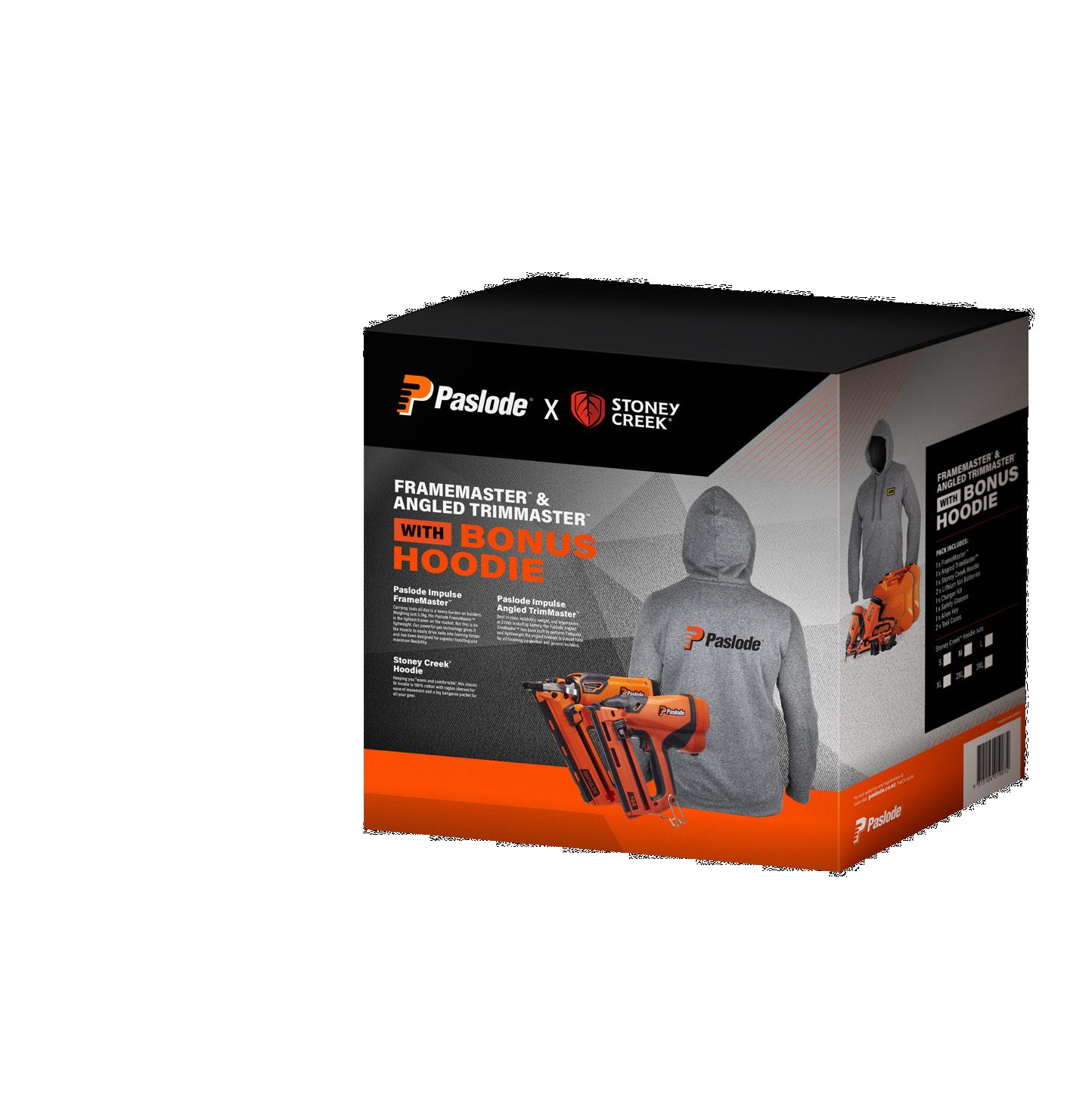

We are pleased to announce that the latest updated GIB® Fire Rated Systems Manual is now available. Includes
– New fire-rated wall systems
– Mass timber encapsulation systems
– Additional construction details based on customer feedback ensuring that designers and installers can use it effectively and efficiently.





Small standalone dwellings, also known as ’granny flats’, have been a hot topic in the industry recently, beginning with an announcement that the Government was seeking feedback on options to make them easier to build.
Between June and August last year, the Ministry of Business, Innovation & Employment (MBIE) and the Ministry for the Environment (MfE) undertook a public consultation on options to enable granny flats to be built without needing a building or resource consent, so long as they met certain criteria.
Almost two thousand submissions were received, with particular interest from homeowners and those working in the building industry – with these groups representing a third of the responses each.
Submissions generally supported the intent to make it easier to build granny flats, but they indicated that changes should lower the risk of building failure, improve customer protections, fairly assign liability, and avoid environmental risks, for example, from natural hazards.
Is a granny flat a sleepout?
Granny flats and sleepouts are not the same thing. A granny flat is a small, self-contained, and detached dwelling that may be constructed on a property where there is an existing home. These are also known as secondary or ancillary houses, family flats, minor dwellings, or minor residential units.
A sleepout, however, is exactly what the name suggests - a building for sleeping that is associated with an existing dwelling.
At present, Schedule 1 of the Building Act allows single-storey detached buildings up to 30m2 to be built without building consent, with certain conditions.
Sleepouts:
When these buildings are to be used as sleeping accommodations, they are referred to as sleepouts - the concept being that the occupant would use the kitchen, laundry, and bathroom facilities in the existing dwelling on the same property as there are none of those allowed in the sleepout. This means that the person in the sleepout would normally be part of or connected to the household occupying the associated dwelling to be able to have that level of access.
Granny flat:
A granny flat is self-contained, with a kitchen, laundry and bathroom facilities. Therefore, the occupants do not need to use the main dwelling for these purposes. This means that the occupants of a granny flat do not need to have a connection to those in the main dwelling. You cannot build a granny flat under the Schedule 1 exemptions.
A granny flat does not need to be just for the use of family members. It could be used as a rental to provide additional income to the owners of the property.
A granny flat can currently be built on a property with an existing dwelling, but it requires a building consent and possibly other consents or permits.
The Government proposal is to allow a granny flat up to 60m2 to be built without a building consent, subject to specified conditions. These conditions will include a focus on the nature of building work (for example, requiring lightweight materials for roofs and who can undertake the work (for example, LBPs).
As an LBP, you may be contacted by homeowners wanting to build a small standalone dwelling under the new proposals. It will be your responsibility to tell them that, as it is only a proposal at this point, they must have a building consent and any other consents or permits that apply. They should contact their local Building Consent Authority for advice on this.
If you are asked to design, build, or supervise the building of a granny flat, you and your customers must understand that a building consent is needed until the changes to the law have come into effect.
Keep an eye out for future announcements about the next stages of this piece of work.
Follow the news and notices section of the LBP website and the regular newsletter: www.lbp.govt.nz/about-us/news-and-updates
Summary of submissions report — Making it easier to build granny flats consultation (2024)

1. What did submissions indicate that any changes should achieve?
a) They should lower the risk of building failure
b) Customer protections need to improve
c) Liabilities need to be fairly assigned
d) Environmental risks needed to be avoided
e) All the above
2. Is a granny flat the same as a sleepout?
a) No, a granny flat is self-contained, a sleepout is not
b) Yes, as you can sleep in both
3. What is your responsibility as an LBP if a homeowner asks you to build one now??
a) Explain that they will still need a building consent at this stage
b) Tell them you’ll be straight around with a contract and can start tomorrow.
Log in to the LBP portal lbp.govt.nz (or scan the QR code) and update your Skills Maintenance activities.



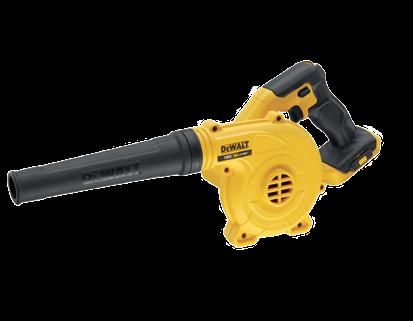



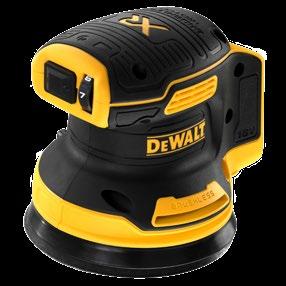

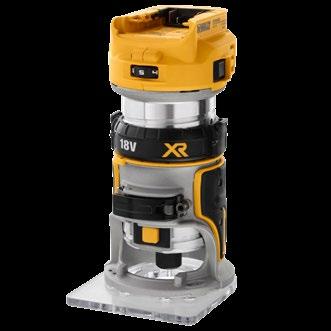


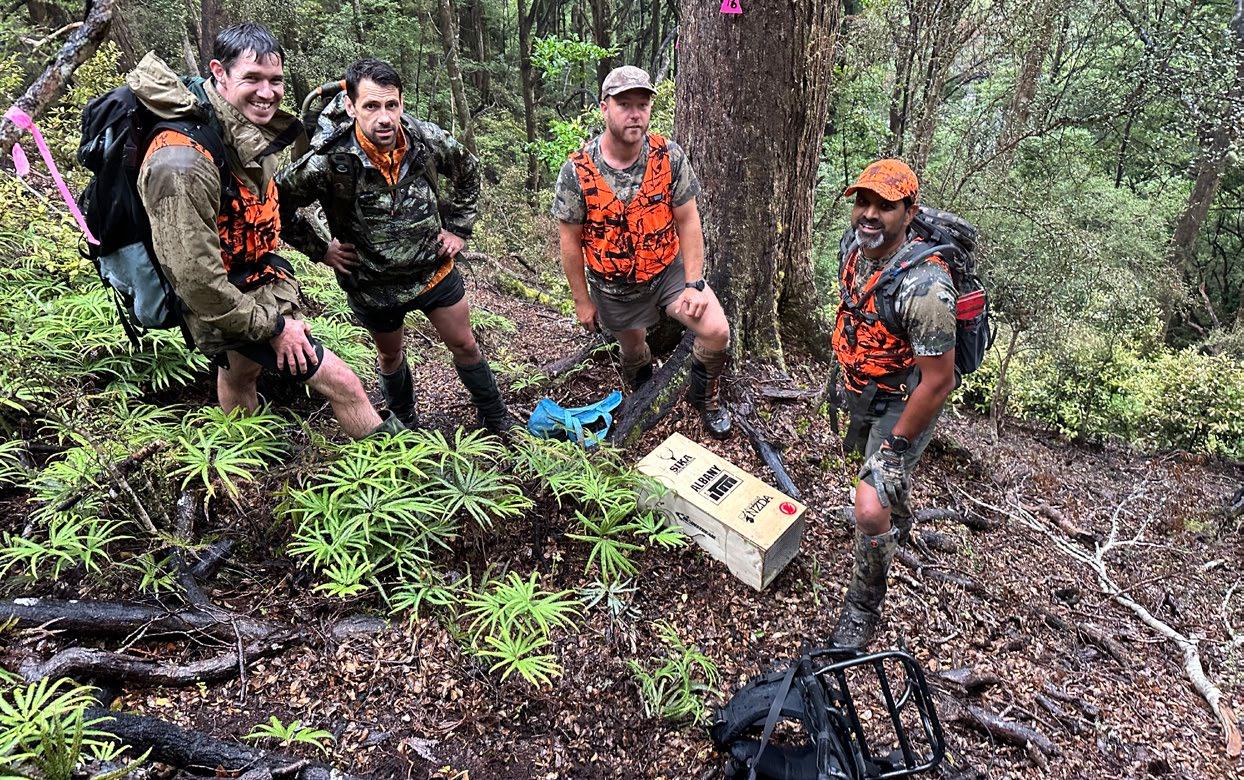
Builder Sam Ashby and Albany ITM GM Terry Robinson are passionate about being out in the wilderness. Sam’s a keen hunter, and Terry’s into tramping big time. They’re also die-hard conservationists who formed a group around two years ago to cull predators from our native forests. The results have been nothing short of extraordinary.
“It started off as a small-scale effort, but so many people have come on board, and things have just snowballed,” says Sam, who runs a residential building company in Auckland and is also vice president of the Auckland branch of the NZ Deerstalkers Association.
“We’re already seeing the effects on native bush and birdlife. It’s staggering. On a trip to Fiordland, I saw the benefits first-hand with multiple pairs of Whio (blue ducks) on the river whistling at us, Kiwi calling outside our tents at night, and Kea hanging out on the open tops.”
Inspired by the work being done by the Fiordland Wapiti Foundation, Sam was determined to pitch in and help with building and distributing traps targeting stoats, rats, ferrets and possums.
“Stoats are devastating for Kiwi and other native birds such as Mohua, Kākā and yellow-crowned Kākāriki. Stoats can take out eggs, chicks and incubating adults in one attack and have played a huge role in the extinction of South Island subspecies of Bush Wren, Laughing Owl and New Zealand Thrush.”


Sam set up trap building workshops in Auckland, arranged to have traps shipped down the line, and, in some cases, would deliver and install the traps himself. Then, things changed up a gear when Sam approached his building supplier, Albany ITM.
“It really was a case of serendipity. I got to meet Terry Robinson, who had just come out of the Milford Track and had seen the predator trap boxes along the side of the track. I told him more traps were needed, and Albany ITM came on board straight away, co-sponsoring the initial set of box traps along with my company.
“Next thing I know, he arranged a meeting with ITM’s Support Office management, and they came to the party with a generous amount of funding to help expand the trapping programme.
“As a result, our vision has grown exponentially. We are now helping out with multiple groups around the country and absolutely loving it. We’re in the process of completing projects with the Sika Foundation in the central North Island and the Predator Free Muriwai group.”

There are over 160,000 recreational hunters in New Zealand and an even bigger number of hikers who enjoy the great outdoors of Aotearoa. Sam reckons that if he taps into this huge resource, the idea of a predator-free New Zealand could become a reality.
“It’s amazing how once word gets out, all these people come out of the woodwork. Once you start tapping into those volunteer networks, it’s so much easier because you’re surrounded by people from the local community. They have such a passion for conservation.
“ITM people have played a huge part in all this, and quite a few stores are keen to get involved locally. I have a few mates around the country who would love to start similar projects. Hopefully, this story might encourage other builders who are into the outdoors to lend a hand.”
If you want to help Sam with his conservation efforts, Sam’s email is: sam@ashbybuilders.co.nz





To help reduce your tax bill, you can offset many of your business expenses against your business income. You'll need to keep good records and hold on to your receipts.
Expenses are the costs you incur in the day-to-day running of your business. At tax time, your total profit (the amount you need to pay tax on) is your taxable income minus the expenses you can claim — so the more you can claim, the less tax you have to pay.
Business expenses are:
▶ Day-to-day revenue expenses for running your business, e.g. advertising or wages.
▶ Assets you buy, e.g. machinery, computers or tools, which are called capital expenses. Note: items that cost $1000 or more must usually be depreciated.
Generally, you claim your revenue expenses in the year you incur them, and you depreciate capital expenses over time.
GST
If you're registered for GST, your income tax return will exclude GST on your income and expenses — GST is accounted for in your GST return.
If you're not registered for GST, your income tax return will include GST on your expenses only.
Business expenses can include:
▶ vehicle expenses, transport costs and travel for business purposes
▶ rent paid on business premises
▶ depreciation on items like computers and office furniture
▶ interest on borrowing money for the business
▶ some insurance premiums
▶ work-related journals and magazines
▶ membership of professional associations
▶ home office expenses
▶ work-related mobile phones and phone bills
▶ stationery
▶ work uniforms
▶ tax agent's fees.
You can't claim the whole cost of all items, even those only for business use. Some things you can only claim half of, e.g. some entertainment expenses. You can only claim 100% of the cost for an expense that's entirely for business use.
If you have an expense that's partly for your business and partly for your private use, you can claim the proportion that relates to your business.
For some expenses, like business entertainment, e.g. client meals and staff functions, you can only claim half.
If you use an area of your home for your business, e.g. your study or garage, you can claim a portion of the household expenses.
Whether you're a contractor, sole trader or running a business, you claim your business expenses annually in your tax return. Deduct expenses from what you've earned from your business during the year.
To claim an expense, you must have a record of that expense, e.g. a receipt, or Inland Revenue may not allow the expense to be claimed.
At the end of the year your business accounts will need to be completed, totalling up all your income and expenses. When you file your tax return, you'll either copy your income and expenses into your financial statements summary (IR10) or send Inland Revenue a summary of your accounts.
An accountant, bookkeeper, or accounting software can help you correct your annual return and claim the correct expenses.
It's easy to let filing and paperwork slip. But keeping good records makes it much easier to do your tax return — and will save you time in the long run.
You must keep your tax records for seven years. These must be in English unless you get approval from Inland Revenue to use another language.
































































































































































































































































































































































































































































































































































































































































































































































10 Year Battery Operated Photoelectric Smoke Alarm #2107 CAV10WF
• Two install options; recessed or flush mount
• RF/wireless interconnection
• NZS 4514:2021 and NZBC compliant
• Compatible with SmartHub and CAVIUS app
• Quick and simple connection process

Trade Pack: 10 Year Battery Operated Photoelectric Smoke Alarms
#10050 WFTPSB
• Pack of 4 x 2107 CAV10WF alarms
• RF/wireless interconnection
• Contains only flush mounting base option
• NZS 4514:2021 and NZBC compliant
•

Thermal Heat Alarm #3107 CAVTH10WF
• Suitable for kitchens, garages and laundries
• Two install options; recessed or flush mount
• RF/wireless interconnection
• NZS 4514:2021 and NZBC compliant
• Compatible with SmartHub and CAVIUS app


Folding Knife #CTKCF
• Tool-free blade change Low Profile Frame Lock Knife #CPK258FL
• Ball bearing-assisted flipper tab for effortless one-handed deployment. 20 oz. Steel Hammer #CHSGP20
• Vibration dampening slot technology and vibration control handle
At On Point Distribution – home of CAVIUS & WATCHMAN Smoke Alarms
- we know that your time is money. That’s why we have launched a new post-installation warranty and customer support programme designed to save you time by removing unnecessary site revisits and allowing you to focus on your business.

During the warranty period of any CAVIUS, WATCHMAN, or SmartSense product - if your customer has any questions or issues, get them to contact us directly and we’ll take care of them.
If we have identified with your customer there is an issue with one of our products and you’re required to conduct a site revisit, we will pay you a flat fee for your time.
Together, we’ll ensure that every installation of CAVIUS, WATCHMAN, or SmartSense products is backed by world-class service.
A recent Building Practitioners Board decision has highlighted the link between consumer protection and a licenced building practitioner's obligations under the LBP Code of Ethics.
Part 4A of the Building Act 2004 and the Building (Residential Consumer Rights and Remedies) Regulations 2014 requires certain documentation to be provided when undertaking residential building projects worth $30,000 or above. This figure is referred to in the Building Act as the prescribed minimum price, which includes GST.
The documents that must be provided are:
▶ Disclosure information
▶ Prescribed checklist
▶ A residential building contract, and
▶ Information and documentation to be supplied on completion of the building work
Disclosure information
This statement provides the client with information about the building contractor to allow them to make an informed choice about who will carry out the work on their property.
This information must be disclosed to the client before the contractor and the client enter into a residential building contract:
▶ Information about the building contractor.
▶ Details of the key contact person on site.
▶ Details of the building contractor's relevant insurance policies, such as contract works, professional indemnity, public liability, and plant and vehicle.
▶ Information about any guarantees or warranties.
The disclosure and checklist forms may not differ from the forms prescribed in Schedules 1 and 2 in these regulations. The Prescribed Checklist and a Disclosure Statement template are available on the building.govt.nz website.
This checklist is Schedule 2 of the Regulations. The contractor must not change anything on the checklist or add business logos or contact details. The checklist is to inform the client about:
▶ the work they are about to undertake
▶ the project structure and management
▶ hiring competent building contractors
▶ pricing and payments
▶ contracts
▶ taking control of the project decision-making and communication with the contractor or their agent
▶ dealing with disputes as they arise.
The checklist is provided to the client at the same time as the disclosure information to allow the client to make an informed decision before signing a residential building contract.
A residential contract, where the contract is for not less than the prescribed minimum price, must provide at least the following details:
▶ Names and details of the parties to the contract and the date it was signed.
▶ The site address, description of the building work, and the expected start/finish dates.
▶ The contract price or method by which it will be calculated (e.g. fixed hourly rate).
▶ Payments and how they are to be invoiced, made, and receipted.
▶ How notices will be given and mechanisms for negotiating and agreeing on variations.
▶ How delays will be dealt with, and how any building defects will be remedied.
▶ Dispute resolution procedures.
▶ Acknowledgement that the contractor supplied, and the client has received the disclosure documents and the checklist.
These requirements would change slightly if the building work is the manufacture of a modular component.
NOTE: Disclosure information, the checklist, and a residential building contract must also be provided for any building work, regardless of the contract value, if the client requests it.
These documents are for the protection of both the client and the contractor. It makes good sense for the contractor to provide the checklist and disclosure statement and have a contract for building work that is less than the prescribed minimum price.
Information and documentation to be supplied on completion of building work
Once building work has been completed, the contractor must provide certain information or documents related to the building work. These include ongoing maintenance requirements, guarantees or warranties, and any ongoing insurance policies held in relation to the building work.
Part 4A of the Building Act is concerned with Consumer rights and remedies in relation to residential building work. As well as providing for the requirements under the Regulations, it also covers such things as the Fair Trading Act 1986 and the Consumer Guarantees Act 1993, implied warranties, remedies for breaches of implied warranties, and remediation of building defects.
The Code of Ethics was introduced in October 2021 and came into force on 25 October 2022 following a transition period to allow practitioners to become familiar with their new obligations. Although the Board has been taking an educative approach to its enforcement, the requirement for disclosure, checklists, and contracts has been in place since 2014. Practitioners should now be well aware of these requirements and comply with them.
Clause 10 of the Code of Ethics, 'You must comply with the law', specifically lists the Building Act 2004 and the Building (Residential Consumer Rights and Remedies) Regulations 2014, among other Acts and any relevant legislation made under those Acts.
The Board decision referred to at the top of this article resulted in a fine of $1500 for breaching clause 10 of the Code of Ethics and costs of $1500 towards the cost of the Board inquiry. The respondent did not provide a disclosure information, a checklist, or have a contract for work that exceeded the prescribed minimum price.
Building (Code of Ethics for Licensed Building Practitioners) Order 2021 — New Zealand Legislation
1. What is the prescribed minimum price of work at which a residential building contract will be required?
a) $30,000 plus GST
b) $30,000 including GST
c) $20,000 including GST
2. What documentation must be provided to the client before a residential building contract is signed for building of work not less than the prescribed minimum price?
a) Disclosure information
b) The prescribed checklist
c) Ongoing maintenance requirements, guarantees or warranties, and any ongoing insurance policies
d) Only b and c
e) Only a and b
3. What documentation needs to be provided to the client when the building work has been completed?
a) Ongoing maintenance requirements
b) Guarantees or warranties
c) Any ongoing insurance policies held in relation to the building work
d) All the above
4. Is an LBP accountable to the Building Practitioners Board for consumer rights and remedies breaches?
a) Yes, under the Code of Ethics
b) No, it is not restricted building work
This article is from Codewords Issue 123.
Log in to the LBP portal lbp.govt.nz (or scan the QR code) and update your Skills Maintenance activities.
OX Pro Thunder 165mm Circular Saw Blade
#OX-TTCTW24-6.5-10
• Made in Australia
• Designed for demolition work
• OXLOK® tooth embedded carbide tip
• Tempered surface treatment & anti-friction finish

OX Pro Lightning 165mm Circular Saw Blade
#OX-LTCTW24-6.5-10
• Made in Australia • OXLOK® tooth embedded carbide tip
• Designed for fast cutting of framing
• Tempered surface treatment & anti-friction finish
• Durable carbide grade ensuring ultimate shock resistance | M9

OX Pro Heavy Duty Bar Clamp Extender
#OX-P203503
• Connects two bar clamps together extending the reach

OX Pro Thunder 184mm Circular Saw Blade
#OX-TTCTW24-7.25-10
• Made in Australia
• Designed for demolition work
• OXLOK® tooth embedded carbide tip

• Tempered surface treatment & anti-friction finish
OX Pro Lightning 184mm Circular Saw Blade
#OX-LTCTW24-7.25-10
• Made in Australia • OXLOK® tooth embedded carbide tip
• Designed for fast cutting of framing
• Tempered surface treatment & anti-friction finish
• Durable carbide grade ensuring ultimate shock resistance | M9

OX Pro Ultrablade Tape Measure - 8m
#OX-P508108
• Up to 4m of standout • 32mm nylon-wrapped anti-tear blade
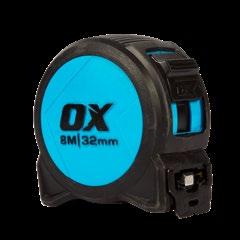

• Double-sided blade printing • Magnetic end hook

By Matt Watson
Gone are the days of rushing back from whatever you were doing on a Saturday or Sunday afternoon to catch the ITM Fishing Show on TV; now you can just bring it up on your smart TV and watch whenever you want, and even better, the entire new season is up there to binge watch, as well as hundreds more episodes.
In a typical season of ITM Fishing, there’s a bit of something for everyone, and this season is no different. The good thing is, if you’re looking for a particular episode with a specific type of fishing or location, or you just want to see tips for your favourite species, you don’t have to wait around. They are all up there right now, and new content is going up weekly.
So here’s a bit of an overview of what’s in season 21 of ITM Fishing.
Finding, Catching, Cleaning and Smoking Deep-Sea Fish

New for this season is the amount of detail we went into dealing with the Bluenose and Bass we caught, from finding them to smoking and utilising the whole fish. On TV, we’d have to skip over the bait rigs, the sounder settings and all the details on how to clean and smoke them. Not now; it’s all there to watch whenever you want. This ep takes a closer look at my home smoker and my experimental recipe for Fish Roe Sausages.
Surfcasting, Drone Fishing, and Netting Mullet

For the first time in over 400 episodes, I go surfcasting, and after nailing a big Snapper first cast, they just kept coming. It was all thanks to the pro surfcasters I was with. I learned so much, and because of the new media format, we have the time to include all the tips and fishing action.
Yellowtail Kingfish Every Drop - Baits, Jigging, and Lures
Another episode in the Far North on the west coast sees us fishing for Kingfish - in my undies, but that’s another story. We’re on my little boat Te Honky, and the day is non-stop action, with Kingfish on every drop.

You’ll see us head out in the Bay of Islands to go top-water fishing and jigging for Kingfish, but some Bluefin Tuna crash the party. The ocean was alive with baitfish, and all the big predators were there, such as thresher sharks, blue sharks, and big Kingfish. We were kept busy until a Giant Bluefin Tuna was hooked right by the rocks, and then things really got crazy.


The Swordfish Mojo episodes, where me and some mates took on the big game fishing boats in the Nationals, would never have been on TV. We didn’t have a cameraman; we shot the whole thing ourselves, and our general laddy behaviour wouldn’t have made it past the censor in this day and age.
But there’s no denying the action was world-class. I’m sure it’s more relatable than ever when we show everything: the epic catches and the epic fails!

The Seychelles is also in this season - one of my favourite overseas fishing destinations. I fish for everything from Trevally on the flats in a tiny skiff to Blue Marlin from an elite 80ft sportfishing boat.
Then I’m back home, fishing from Te Honky and showing you how to catch and then cook a Kingfish six different ways. We also head to Niue, and I take a bunch of builders on a fishing trip of a lifetime in the Far North.

They're up and ready to watch right now. Just jump on YouTube and search for ‘Ultimate Fishing’ or get on the Ultimate Fishing app. All the content is free courtesy of my mates at ITM.
Till next time
Keep ‘em tight
Matt



Heavy Duty Extension Lead #R2820
• 20 metres
• 10 amp maximum current
• Clear plug and socket for easy safety inspection

PlugBoss Powerboard #D105PBOSSPA6
• 6 outlets
• Surge protection
• 10 amp maximum current
• 3m lead length

$35 EXCL GST
Tradesman Folding Knife #CTKCF
• Tool-free blade change
Low Profile Frame Lock Knife #CPK258FL
• Ball bearing-assisted flipper tab for effortless one-handed deployment.
Tradie Value Pack #PROPACK1
• Electresafe Powercentre with RCBO protection - 1.8 heavy duty lead - 4 double pole outlets
• 5 metre heavy duty extension lead
• 10 amp maximum current

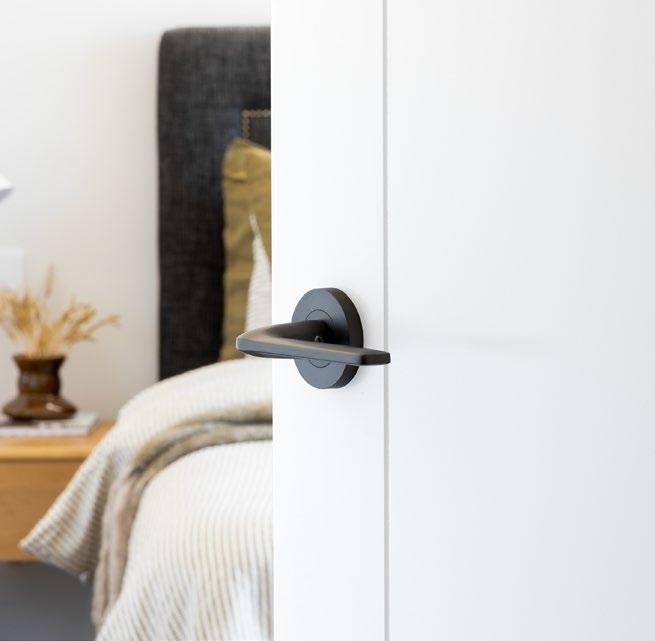








Stronger by design
Timber x steel = superior
Innovative fixing solution
Foot plate with angled anchor bolt for insulated slabs
Hassle-free fit for tight spaces
Narrow, space saving 240mm column
Light & simple to install
Easy, on-site assembly – no special tools or equipment
The New Zealand Green Building Council has just released a comprehensive 'how to' guide for designers and building professionals looking to achieve Homestar certification when building a new home.

The concept behind the Homestar programme is to encourage people to build healthier homes that are warmer, drier, more energy efficient, and sustainable.
While the NZ Building Code sets out minimum standards for residential building, the Homestar programme sets out a number of design practices that exceed building code requirements to achieve significant improvements in building performance.
With Homestar, points are awarded to rate a home's performance and environmental impact. Homes are rated based on specific design features and range from Homestar 6 to Homestar 10.
A Homestar 6-rated home will be easier to keep warm and healthy, more cost-effective to run, and more environmentally friendly than a home built to the current NZ Building Code standards, whereas a 10 Homestar rating means the home has been built to an exceedingly high standard against all measurable criteria.
The guide is simple to follow and is set out in chapters covering the fundamental design elements and specifications to achieve Homestar certification. The chapters cover build-ups for walls, floors, roofs, joinery installations, moisture control, controlling the interior environment, and materials selection based on embodied carbon and greenhouse gas emissions.
The guide also includes several case studies of typical residential building types in New Zealand, with thermal modelling in three different climate zones to assess the specification required to meet Homestar performance levels in each climate.
The guide is a result of an industry-wide collaboration involving a wide range of building industry groups, including BRANZ, NZ Institute of Architects and Designers New Zealand.
The main requirements of a Homestar home over and above a standard code-compliant home are:
▶ Continuous mechanical ventilation to ensure consistently good indoor air quality.
▶ Continuous insulation, including thermal breaks in the building envelope to minimise the risk of condensation, which leads to mould.
▶ Carbon: Accounting for both embodied and operation carbon.
▶ Cool: Design to avoid overheating.







branz.co.nz/resource-recovery-map
• Suitable for filling gaps of all sizes
• For interior and exterior applications
• Suitable for timber, plaster, mortar, brick, stone, concrete and primed metal

No More Gaps Multipurpose #101901
• Excellent paintability with water and oil based paints Sugar Soap #941430211114101

• 475g
• Superior flexibility
• A smooth flawless finish and minimal shrinkage
• Superior adhesion to a broad range of surfaces, resulting in a lasting finish
• Low toxic, low odour, low VOC

• 1 Litre
• For cleaning walls and ceilings before painting and wallpapering
• Super concentrated - makes up to 80 litres








☐ Bay of Islands ITM Kaikohe 09 407 7600
☐ Bay of Islands ITM Paihia 09 402 7703
☐ Bay of Islands ITM Waipapa 09 407 8002
☐ Dargaville ITM 09 439 8730
☐ Far North ITM Kaitaia 09 408 3927
☐ Far North ITM Mangonui 09 406 0048
☐ Mangawhai ITM 09 431 4963
☐ Waipu ITM 09 432 0203
☐ Whangarei ITM 09 437 9420
☐ Albany ITM 09 415 6889
☐ Barrier ITM Tryphena 09 429 0466
☐ Dayle ITM Avondale 09 828 9791
☐ Dayle ITM East Tamaki 09 274 4942
☐ Dysart ITM Glen Innes 09 521 3609
☐ Hillside ITM Glenfield 09 443 8101
☐ MacClure's ITM Henderson 09 836 0088
☐ Mahia ITM Takanini 09 267 0234
☐ Matakana ITM 09 422 7525
☐ Thomsons ITM Papakura 09 294 9410
☐ Tuakau ITM 09 236 8226
☐ Waiuku ITM 09 235 7289
☐ Warkworth ITM 09 425 1021
☐ Weck’s ITM Patumahoe 09 236 3684
☐ Weck’s ITM Pukekohe 09 238 3678
☐ Western ITM Kumeu 09 412 8148
☐ Western ITM Swanson 09 832 0209
☐ Western ITM Whenuapai 09 416 8164
☐ Crighton ITM Greytown 06 304 7193
☐ Crighton ITM Seaview 04 568 3896
☐ Toa ITM Heretaunga 04 527 6800
☐ Toa ITM Porirua 04 232 5999
☐ Acorn ITM Hamilton 07 856 6789
☐ Cambridge ITM 07 827 0953
☐ Coromandel ITM 07 866 8848
☐ Dayle ITM Kopu 07 868 9829
☐ KKBS ITM Katikati 07 549 0689
☐ Matamata Post & Rails ITM 07 888 8189
☐ Mount ITM Mt Maunganui 07 575 3126
☐ Omokoroa ITM 07 552 5770
☐ Opotiki ITM 07 315 5984
☐ Otorohanga ITM 07 873 4841
☐ Pauanui ITM 07 864 8579
☐ Rotorua ITM 07 347 9423
☐ Taupo ITM 07 378 9899
☐ Tauranga ITM 07 541 1232
☐ Te Puke ITM 07 573 9993
☐ Thomsons ITM Hamilton 07 849 3674
☐ Thomsons ITM Whatawhata 07 829 8518
☐ Timmo’s ITM Te Awamutu 07 871 7545
☐ Tokoroa ITM 07 886 6611
☐ Turangi ITM 07 386 5736
☐ Whakatane ITM 07 307 0031
☐ Napier ITM 06 842 0531
☐ Central ITM Carterton 06 929 7598
☐ Central ITM Feilding 06 323 3400
☐ Central ITM Marton 06 327 5458
☐ Crighton ITM Levin 06 368 4057
☐ Hometown ITM Foxton 06 363 8049
☐ Manawatu ITM 06 356 9490
☐ New Plymouth ITM 06 758 8939
☐ North Taranaki ITM Inglewood 06 756 7535
☐ North Taranaki ITM Waitara 06 754 8822
☐ North Taranaki ITM Waiwhakaiho 06 759 7435
☐ Stratford ITM 06 765 7800
☐ Blenheim ITM 03 578 3049
☐ Havelock ITM 03 574 1018
☐ Motueka ITM 03 528 7254
☐ Nelson ITM 03 548 5487
☐ Picton ITM 03 573 6888
☐ Takaka ITM 03 525 0005
☐ Ashburton ITM 03 307 0412
☐ Basher’s ITM Amberley 03 314 8311
☐ Darfield ITM 03 318 7474
☐ Geraldine ITM 03 693 9397
☐ Greymouth ITM 03 768 0441
☐ Hamptons ITM Waltham 03 374 3333
☐ Hillside ITM Hornby 03 349 9739
☐ Kaiapoi ITM 03 327 8829
☐ Kaikoura ITM 03 319 5447
☐ McMullan ITM Hokitika 03 755 8519
☐ McVicar ITM Harewood 0800 191 674
☐ ProBuild ITM Rolleston 0800 445 520
☐ Rangiora ITM 03 313 4862
☐ Timaru ITM 03 688 8074
☐ Waimate ITM 03 689 7427
☐ Dunedin ITM 03 262 1008
☐ E H Ball ITM Invercargill 03 218 3787
☐ Fraser Hardware ITM Balclutha 03 418 0170
☐ Gore ITM 03 208 0649
☐ Mosgiel ITM 03 489 8885
☐ Southbuild ITM Winton 03 236 6055
☐ Southern Lakes ITM Alexandra 03 427 2221
☐ Southern Lakes ITM Cromwell 03 445 0081
☐ Southern Lakes ITM Queenstown 03 451 1567
☐ Southern Lakes ITM Wanaka 03 443 2545
